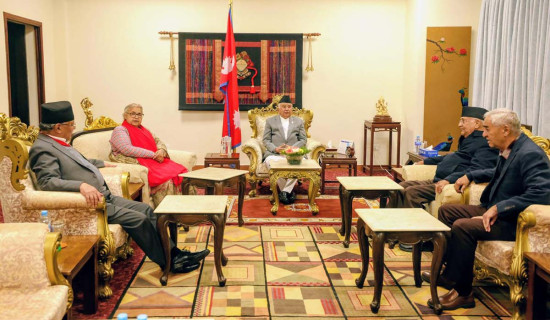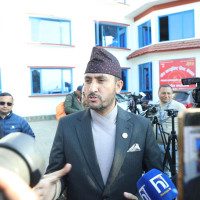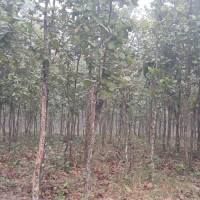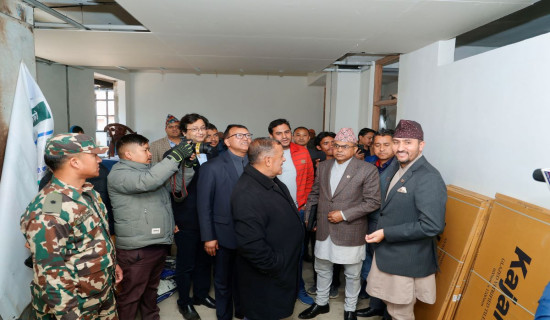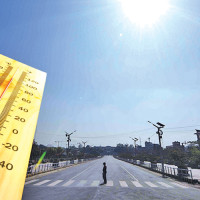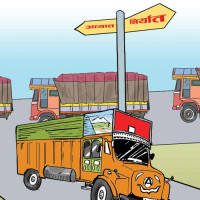- Tuesday, 23 December 2025
Decoding Disasters, Damage And Death
Nepal is among the most disaster-prone countries, due to its steep and rugged terrain, high seismic activity, monsoonal dynamics, and socio-economic vulnerabilities. The rugged terrain, fragile slopes, and poorly planned settlements exacerbate the impact of natural disasters. Nepal ranks 4th in climate-related hazards, 11th in earthquake risk, 30th in flood/water-induced hazards, and 69th in long-term climate risks, according to the Index for Risk Management.
The vulnerability of Nepal is evident in the recent report released by the National Disaster Risk Reduction and Management Authority (NDRRMA), covering the period between 14 April and 1 November 2025. In just six-and-a-half months, 335 people lost their lives, 41 went missing, and 264 were injured in 597 disaster incidents.
Floods, landslides, lightning, snake bites, animal attacks, fires, windstorms, and avalanches were the primary hazards, causing loss of lives, widespread destruction of property, loss of livestock, and environmental degradation. These disasters highlight the ongoing risk to communities, particularly those living in remote or marginal areas with limited access to early warning or emergency services.
Recurring challenges
Nepal regularly faces earthquakes, floods, landslides, droughts, lightning, heat waves, cold waves, avalanches, hailstorms, snowstorms, windstorms, forest fires, and glacial lake outburst floods. The recurring loss of lives, properties, crops, and livelihoods is alarming. Every year, the country experiences irreparable losses, yet neither the government, humanitarian agencies, nor the vulnerable communities have devised lasting solutions for many preventable disasters.
The Nepal Disaster Report 2024 paints a stark picture. Between 2018–2024, a total of 32,375 small- and large-scale disasters occurred, which claimed 2,996 lives (1,278 male and 1,678 female), left 446 people missing, and injured 11,752. Vulnerable groups—women, children, the elderly, and persons with disabilities—bear the brunt of disasters, with women disproportionately affected in terms of fatalities.
Disaster creates, aggravates and perpetuates poverty which renders people more vulnerable to disasters and weakens their coping strategies. Loss of life, property, and livelihood marginalises people, often trapping them in a cycle of deprivation. During the reported period, 57,271 houses were affected, 43,168 infrastructure were destroyed, and 18,336 livestock were lost, resulting in an estimated Rs. 23.60 billion in damages. Landslides and fires were the most frequent disasters, followed by lightning strikes, floods, animal attacks, and snake bites.
Save earthquakes and epidemics, most of these disasters could be prevented or mitigated through robust disaster risk reduction (DRR), preparedness, and response systems. Early action, hazard mapping, community awareness, and resilient infrastructure can drastically reduce human and economic losses. However, government agencies often avoid risk-taking and delay urgent decisions before, during, and after disasters. For example, the post-2015 earthquake response revealed painfully slow approvals for 17 types of building prototypes, alongside weak capacity to distribute relief efficiently. Such delays cost lives and extend recovery time.
The collaboration between the government and humanitarian agencies—including UN bodies and NGOs—remains inadequate. During and after the 2015 earthquake, poor coordination among state and non-state actors led to duplication in efforts, gaps in relief delivery, and delays in rehabilitation. Despite years of learning, substantial improvements remain limited.
Nepal relies heavily on external borrowing, leaving emergency preparedness underfunded. The closure of USAID which used to fund its TAYAR project, that supported risk-sensitive land-use planning and slope stabilization in various municipalities, has stalled local capacity development. Without dedicated funding, many local governments struggle to implement area-specific DRR plans effectively. Historically, reactive, top-down approaches have undermined municipal-level preparedness. Early warning systems, though improved technologically, are not accessible evenly, especially in remote, mountainous regions. Investments in resilient infrastructure and ‘build back better’ approaches remain inadequate, particularly in highly vulnerable districts.
Nepal has shifted from purely reactive disaster management to a proactive framework encompassing mitigation, preparedness, response, and rehabilitation under the National Disaster Risk Reduction and Management Act (NDRRMA). Authority is devolved to provincial and local governments, creating institutional bodies, disaster management committees, contingency funds, and DRR integration into development planning. NDRRMA coordinates activities across ministries and government levels.
Health-system governance has been integrated through the Health Emergency Operation Centre, improving coordination for disaster and public health emergencies across federal, provincial, and local levels. Local disaster management committees now monitor hazards, coordinate evacuations, manage contingency funds, and influence development plans. Additionally, the government applies the Green, Resilient, and Inclusive Development approach to mainstream disaster resilience into development strategies.
Disaster risk financing has also improved. Community-based DRR measures—including training local responders, vulnerability mapping, fund management, and evacuation drills—remain crucial, as demonstrated during the post-2015 earthquake rebuilding, which prioritized resilience standards, training local masons, and community oversight.
Way forward
To save lives, property and the environment, all tiers of government must prioritize DRR, preparedness, and response. This entails sufficient funding, capacity-building for frontline responders, and training local communities in rescue, relief, recovery, and rehabilitation operations. Prevention must take precedence over reaction. Local populations, equipped with practical knowledge and hazard awareness, are better positioned to prevent, cope with, and recover from disasters. Humanitarian agencies must coordinate effectively at all stages of emergency management to minimise avoidable loss. Given Nepal’s substantial investment in the Army, Police, and Armed Police, a dedicated emergency force should be developed under a unified command, capable of rapid mobilisation during disasters.
Introducing DRR and emergency preparedness curricula in high schools and colleges can cultivate youth volunteers trained to prevent and respond to natural and human-induced disasters. A common tendency among humanitarian actors is viewing emergency response as philanthropy. Consequently, disaster-affected communities are often treated with inadequate dignity and respect. A human rights-based approach emphasize that people lose life, property and dignity in the face of disasters. Strengthening DRR, preparedness, and coordinated response is essential to protect Nepal’s communities, economy, and environment from recurring disasters, ensuring that prevention, resilience, and human-centred recovery remain central to national policy.
(Sedhai is a freelance writer.)



